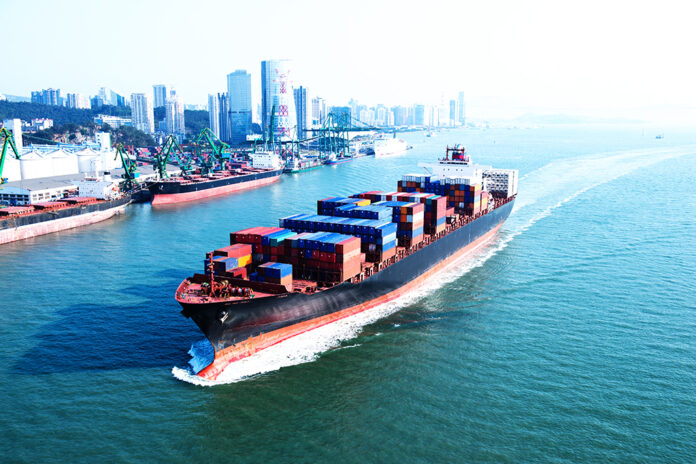The meeting of President Joe Biden and his Chinese counterpart Xi Jinping on the sidelines of the annual APEC summit in San Francisco on Wednesday was carefully prepared with weeks, if not months, of diplomacy.
It let both men achieve their goal of appearing strong and resilient in the face of the other for the sake of domestic audiences while doing all they could to keep a bilateral relationship with so many potential flashpoints as spark-free as possible.
Yet, unsurprisingly, China-U.S. relations remain fraught, and the two countries continue to be long-term strategic adversaries in multiple domains. Equity markets’ reaction to the Xi-Biden meeting in bidding up the share prices of U.S. firms selling into and sourcing from China seemed premature.
A more realistic interpretation of the meeting is that its modest outcomes should partially alleviate downside risks in the near term.
More like business as usual was China’s announcement on November 7 that it had added rare earths, including compounds and alloys, to its list of mineral resources requiring extensive data disclosures for export.
This follows export restrictions announced last month on graphite, whose key uses include anodes in EV batteries.
Share prices in non-Chinese graphite producers immediately surged on anticipated stockpiling and a rush to obtain alternative supplies.
Australia’s Syrah Resource—a Tesla supplier that runs the Balama graphite mine in Mozambique—saw its shares soar by 40%, while Renascor Resources jumped by 36%. London-listed Tirupati Graphite’s shares were up 20%, and those of Brisbane-based Novonix up 22%.
The official justification for these export controls is to prevent nuclear proliferation. However, the timing of this announcement, less than a week after the US government’s latest tightening of its export controls on semiconductors, suggests retaliation.
They follow in the wake of earlier, similar requirements imposed on gallium and germanium, two rare minerals necessary for advanced semiconductor manufacturing.
Market Dynamics
Over the past five years, the global graphite market has quintupled as demand has skyrocketed with the growing adoption of EVs. The International Energy Agency forecasts that demand will multiply 20 to 25 times by 2040.
China currently refines more than 90% of the world’s graphite, a dominant position of which it is now taking geopolitical advantage.
Its licensing requirements are not country-specific, and like the earlier controls on gallium and germanium, licensing applications will operate under a presumption of approval rather than the presumption of non-approval that the United States instituted in the semiconductor industry.
However, they give Beijing a flexible tool it can use at its discretion.

This is not new; in 2010, China banned the export of rare earths to Japan for two months over a fishing dispute. In 2020, Chinese exporters stopped shipping graphite to Sweden shortly after a Swedish free-speech advocacy group honored Chinese dissident Gui Minhai.
More skeptical minds saw it as an effort to disadvantage the nascent Swedish battery firm Northvolt just as China’s top battery maker CATL was expanding into Europe.
Technology Tactics
Amid escalating technology tensions between China and the West, the export controls follow a well-established pattern where Chinese authorities are strategically ambiguous, with their measures less conspicuous than those coming out of Washington and, increasingly, Brussels.
Chinese authorities also use these iterative measures as learning exercises, carefully gauging responses and impacts before moving on to the next step.
Yet they also clearly convey that China will not stand idly by while its technological ambitions are curbed. Xi gave Biden the standard Chinese lecture when they met about what it says is Washington’s hostile containment of its technological ambitions.
The measures also illustrate a key element of Chinese industrial policy: rather than exporting graphite and other critical minerals, it intends to export the batteries and vehicles made with them, capturing a far higher share of the value chain.
Damage Assessment
Much of the impact of the measures will depend on the specifics of implementation, how freely licenses will be granted, how burdensome application procedures will be and how long it will take until they are processed.
Even so, it is likely that major graphite buyers will attempt to “de-risk” by developing alternative sources.
Turkey, Brazil and several African countries hold significant natural graphite deposits. Mexico and Canada already export substantial amounts of the mineral. The U.S. government has approved a USD150mn loan to develop the Balama project to bolster U.S. supply chain security, while Tanzania has received significant Australian corporate investment.
However, shifting from Chinese preponderance will take time. It can take five to 10 years to develop a mine from the start of construction to the start of production.
Energy Transition
This episode highlights key conundrums facing Western governments and car manufacturers as they seek to navigate the energy transition. “De-risking” will increase cost, as economic efficiency is no longer the dominant organizing principle of international trade.
Western capitals have so far assessed that the security benefits of their actions outweigh these costs.
However, that calculation may change if China expands its export controls over more critical minerals and resources where it holds a dominant position.


